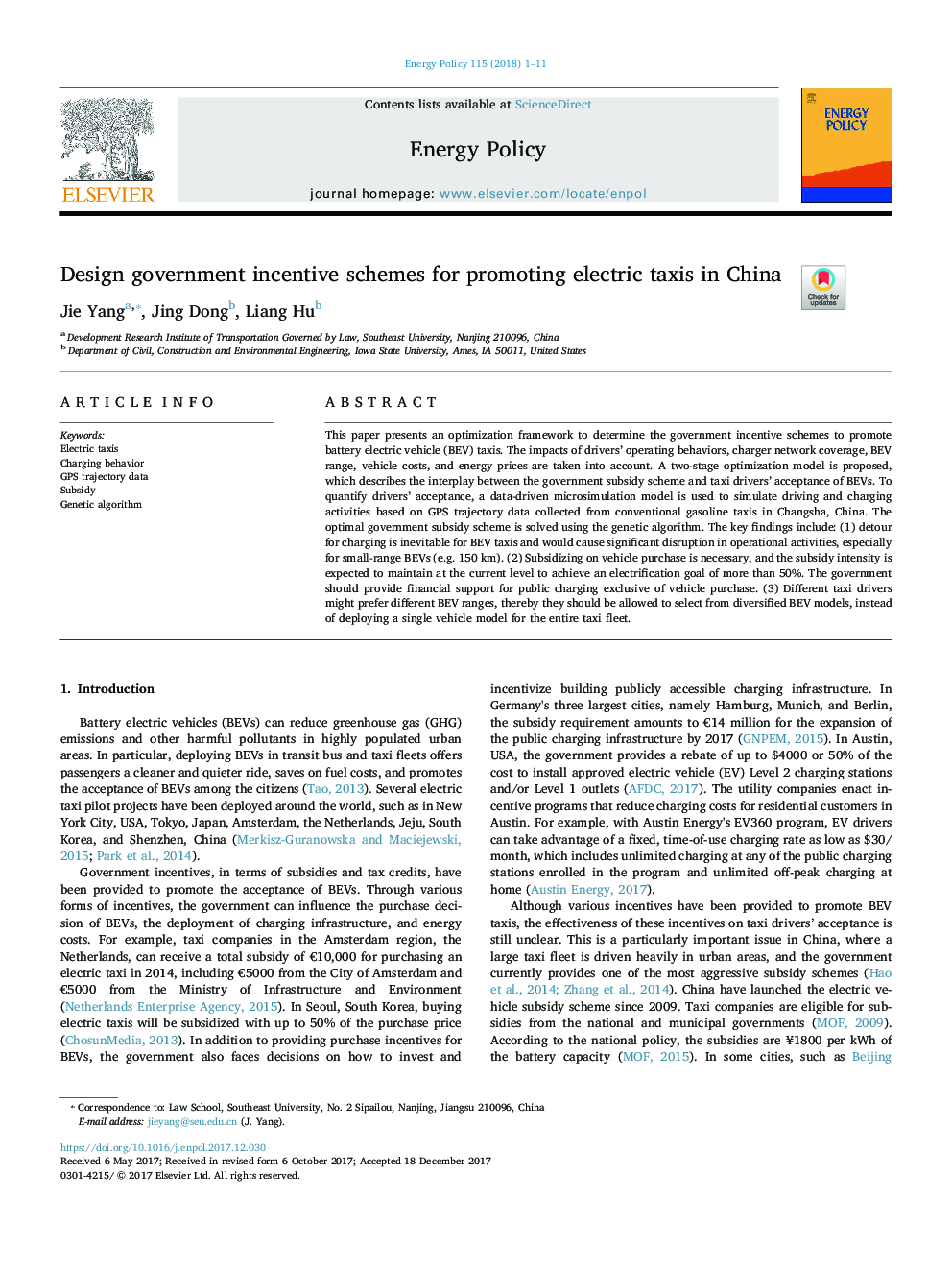| Article ID | Journal | Published Year | Pages | File Type |
|---|---|---|---|---|
| 7397442 | Energy Policy | 2018 | 11 Pages |
Abstract
This paper presents an optimization framework to determine the government incentive schemes to promote battery electric vehicle (BEV) taxis. The impacts of drivers' operating behaviors, charger network coverage, BEV range, vehicle costs, and energy prices are taken into account. A two-stage optimization model is proposed, which describes the interplay between the government subsidy scheme and taxi drivers' acceptance of BEVs. To quantify drivers' acceptance, a data-driven microsimulation model is used to simulate driving and charging activities based on GPS trajectory data collected from conventional gasoline taxis in Changsha, China. The optimal government subsidy scheme is solved using the genetic algorithm. The key findings include: (1) detour for charging is inevitable for BEV taxis and would cause significant disruption in operational activities, especially for small-range BEVs (e.g. 150Â km). (2) Subsidizing on vehicle purchase is necessary, and the subsidy intensity is expected to maintain at the current level to achieve an electrification goal of more than 50%. The government should provide financial support for public charging exclusive of vehicle purchase. (3) Different taxi drivers might prefer different BEV ranges, thereby they should be allowed to select from diversified BEV models, instead of deploying a single vehicle model for the entire taxi fleet.
Related Topics
Physical Sciences and Engineering
Energy
Energy Engineering and Power Technology
Authors
Jie Yang, Jing Dong, Liang Hu,
